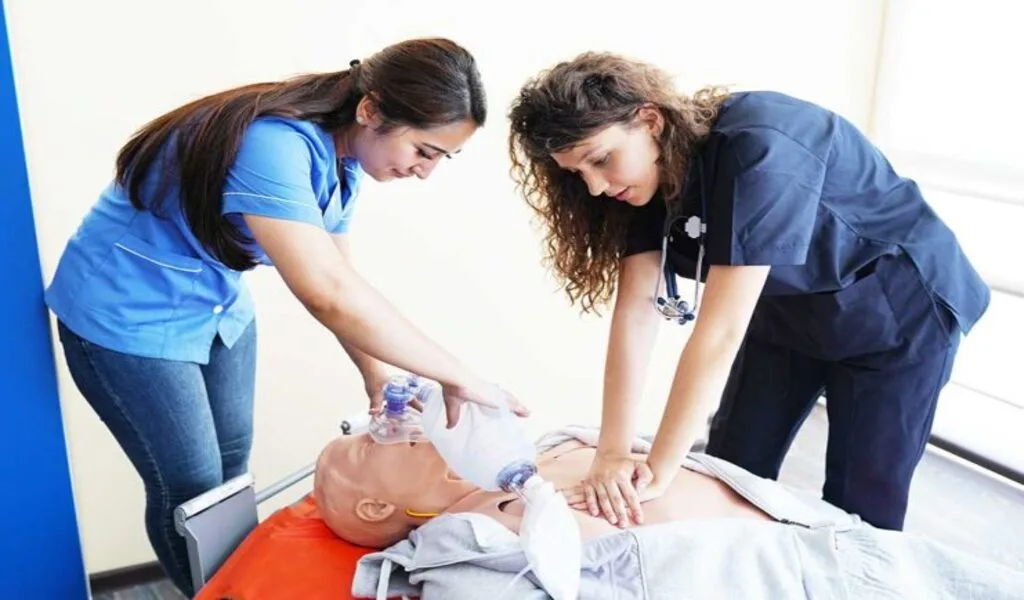Health
Learning to Save Lives: A Guide to Cardiopulmonary Resuscitation and First Aid

In the event of a medical emergency in which a person has gone into cardiac arrest or has stopped breathing, cardiopulmonary resuscitation (CPR) can be performed to save their life.
People need to be prepared to help others in times of medical crisis, and taking a first aid course from a reputable institution, such as First Aid Course Perth, is the best way to get ready for that.
It’s a requirement for anyone hoping to be a first responder in an emergency, and it’s a cornerstone of first aid education. Everyone should prioritise learning CPR since it can be the difference between life and death.
CPR’s Vital Role
When the heart suddenly stops beating, it cuts off oxygen to the body’s important organs, a situation known as cardiac arrest. No matter how old or healthy you are, anyone can get it. Performing CPR right away can be crucial in these situations to prolong life until medical assistance comes. The evidence is overwhelming: giving chest compressions doubles or even triples a victim’s probability of survival.
Performing CPR helps ensure oxygenated blood reaches vital organs, including the brain and heart, by simulating the heart’s beating motion with chest compressions and rescue breaths. Damage to the brain caused by acute oxygen deprivation might be permanent within minutes.
Here’s where cardiopulmonary resuscitation comes in, keeping blood circulating and buying time until more advanced medical care can be administered. If you are in or around Canberra, you may sign up for First Aid Course Canberra and learn how to perform CPR and other essential first-aid techniques.
CPR Fundamentals
To properly administer CPR, one must fully grasp its fundamental principles. CPR consists primarily of chest compressions and rescue breathing. These processes cooperate to ensure oxygen-rich blood constantly circulates throughout the body.
Compressions of the Chest
CPR begins and ends with chest compressions. They are characterised by applying regular, rhythmic pressure to the chest to improve blood flow. The heel of one hand must be placed in the centre of the victim’s chest, between the nipples, before beginning chest compressions. Shoulders should be directly over the hands, and the other hand should be interlaced atop the first.
A compression depth of at least 1.5 inches is recommended for infants and young children. In contrast, a depth of at least 2 inches is recommended for adults. A compression rate of 100 -120 compressions per minute is recommended for chest compressions.
If you or someone you know lives in or around Tasmania, enrolling in First Aid Course Tasmania will give you the knowledge and confidence to do chest compressions correctly.
In Case of Emergency
Rescue breaths supplement chest compressions by delivering oxygen to the victim’s lungs. Tilt the victim’s head back, elevate their chin, and pinch their nostrils after 30 compressions.
This posture keeps The airway clear, and rescue breathing is more successful. Give them two slow, deep breaths of about a second each. Ensure the victim’s chest rises significantly with each breath to show that they are getting enough air.
Basic Life Support Procedures
A systematic approach to CPR is essential to maximise efficiency and effectiveness during a stressful emergency. Here are the step-by-step procedures that help keep people calm and allow first responders to concentrate on saving lives:
Analyse the Predicament: Check for potential dangers before beginning CPR. Neither you nor the victim should be in danger of being hurt any longer. Check for threats like live wires, moving vehicles, and the surroundings.
See How They React: Tap the person lightly and ask, “Are you okay?” If no one answers, you should quickly find someone to help you contact 911 (or Triple Zero, Australia’s emergency number). CPR should be started, and an automated external defibrillator (AED) retrieved if one is nearby.
Start CPR (Chest compressions only): Put your knees next to them and place your hands in the same position. Compress deeply and firmly using only your body weight. Compressions should be delivered regularly and consistently, with adequate time for the chest to relax between rounds.
Give them rescue breathing: After 30 compressions, the victim should have their head tilted back, chin lifted, and two rescue breaths given gently. Check for a rising chest with each breath to see if you’re getting enough air.
Continue CPR: Continuously alternate between 30 chest compressions and two rescue breaths until medical assistance comes or the person shows recovery symptoms.
Anybody can be saved with CPR
CPR is not a magic bullet; it’s only a way to keep someone alive until more advanced medical care can be administered. The cause of cardiac arrest, reaction time, and the victim’s general health all have a role in whether or not CPR is successful.
Conclusion
Learning how to do cardiopulmonary resuscitation (CPR) is a life-saving technique that can be used in various situations. When people in potentially life-threatening situations know the importance of CPR, understand its fundamental principles, and employ a systematic approach, they may make a huge impact. Timely and successful CPR has the potential to save numerous lives, so it is of the utmost significance.
To become proficient in CPR, consider participating in a certified training program. Courses like these give students extensive hands-on training, elevating their competence and self-assurance in performing CPR. Educating the public on the need for cardiopulmonary resuscitation (CPR) and inspiring more people to learn this technique can help make our communities safer and more caring.
Keep in mind that time is of the essence when performing CPR. Your capacity to take prompt and decisive action could save a life. Let’s work together to spread CPR knowledge and create a network of trained first responders who prioritise saving lives over anything else.




























